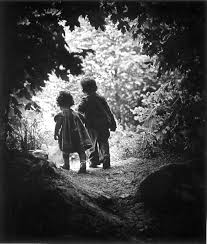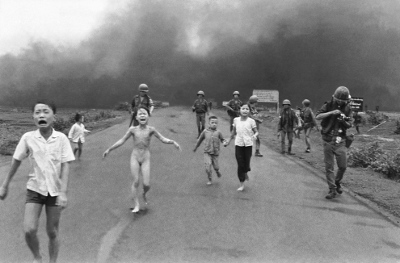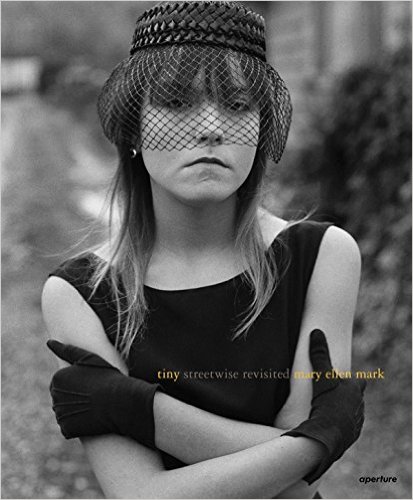Did you ever take an honest and thoughtful look at how children, childhood and adolescence feature in photography. More personally how was your childhood captured in images what parts of your youth did your parents decide to capture and more importantly what didn’t they? I believe there is a vast field stuck in cliche, constrained by social conventions, devoid of progress and ripe for discovery. Consider how we categorize photography into genres. We speak of Documentary, Travel, Nature, Landscape, Wildlife, Science, Sport, Advertisement, Architecture, Food, Fashion, Porn, Wedding, Street, Portrait, Fine Art and other types of photography but children photography is never considered a genre in its own right. This I find is in stark contrast to the relevance children have in our lives. In this blog I intend to demonstrate that children largely feature in photography as accessories or conduit only. Their individuality, the circumstances of their childhood rarely matter. This said, there are of course exceptions but they are far and few in between.
Recommended exceptions:

The book “Children of this world” was published in 1958. Most photographs were taken by magnum photographers in the post war years. I do not recall how I ended up holding this book in my hands but I do recall that when opening it again, 40 years later, many images were still vivid in my mind. Like a scent revives long forgotten memories in a flash, these images immediately transported me back in time to my own childhood. The collection shows an extraordinary range of cultural and socio-economic settings and great breadth of emotional expressions. The true subject of the book are children and children only.

Sally Mann requires no introduction. Her work covering the adolescence of her own children got a lot of attention, not all favorable. A NY Times Magazine article sheds some light on the reception of her work. Suffices to say that if you or I were to post such honest and beautiful depictions of childhood and adolescence on social media authorities would remove our children from our care within 24 hours.
The implied parental selfie
All of us were children and at some point or another we were tasked to smile into a camera held by a parent. The intended image typically followed a formula. Those who do make the effort to enlist the services of a photographer to capture images of their children or family have a clear and also very formulaic expectation regarding the images produced.

The photographer is tasked to deliver an image where the emotional range of moods expressed are limited to expressions of happiness and typically this needs to be supported by idyllic, romantic or pristine locations such as impeccable gardens, living rooms, Christmas tress and the like . To take a better known example look at Eugene Smith’s picture of his own children.
It appears that we deliberately blend out the greater part of our children’s emotional experiences. Children throwing a tantrum, acting defiant, crying, exhausted, sick, fighting with a sibling, screaming at a parent, dirty from sports, naked in the bath tub, struggling with homework, unhappy and withdrawn, content and absent minded, lost in play all these moments and many more are systematically not captured in fact many emotions and expressions are considered inappropriate. Even the child’s personality does not feature in those images. I can only speculate about the reasons and to do so I begin with the obvious observation: The parents are the chief editors and it appears by enlarge that the socially acceptable depiction of children mostly serves as testimony to parental success and therefore the images of our children are by extension merely a parental selfie. Going a step further I argue that because of it we lack the customs, tradition, agreed formulas and image language to effectively capture, retain and communicate the character and experiences of our own children.
If you need more than the image above to convince yourself follow this Link and you will find widely shared and popular work of parent photographers who went to great extent to deliver creative solutions involving their children. But on closer inspection you will find that there is nothing in these images telling anything about the children’s individuality or childhood circumstances. The entire collection is staged and serves merely as a testimony to the parents remarkable creativity. This is not photography of children it is photography using children as add ins.
Manipulation, Propaganda, Emotional catalysts

From times immemorial children have been used to rouse public emotions, to stir anger, outrage, to energize or to create sympathy. From 16th century Jews finding themselves accused of using the blood of Christian children in Prague’s Ghettos to Nick Ut’s 1972 Vietnam war image titled Napalm girl, or headlines of Syrian refugee children being washed ashore, the pattern of usage is alive and well today.
 The effect of using children as a tool to shape and influence opinion continues even in an age where digital manipulation should lead us to question all that we see before responding to it. Editors, politicians, generals, corporations, all entities with a stake in public opinion are very much aware of the power such images have on the public. Similarly any politician wanting to present himself to the public as a caring and nurturing persona will resort to the power of children in images, the baby kissing never ends because it works.
The effect of using children as a tool to shape and influence opinion continues even in an age where digital manipulation should lead us to question all that we see before responding to it. Editors, politicians, generals, corporations, all entities with a stake in public opinion are very much aware of the power such images have on the public. Similarly any politician wanting to present himself to the public as a caring and nurturing persona will resort to the power of children in images, the baby kissing never ends because it works.
For the image of a child to properly function as a catalyst triggering a strong emotional response the child itself should ideally remain anonymous. The viewer has to see the child as a place holder for all children or the greater population. Therefore, in circumstances like this, no child is ever the true subject of the image in which it features, its individuality is immaterial, it is merely a prop or an add in that is know to function like Pavlo’s bell.
Advertisement is about selling a product and children like all other accessories are a reduced to be a sales tool. Typically children are featured to feed the illusion of happy, healthy customers. Naturally in this genre we do find just that and nothing else.
In conclusion I find that while media, and advertisement provide an abundance of images featuring children they merely serve as tools and there is nothing here that would help me find new ways to capture any particular child, its moods, personality, qualities or more generally its individuality.
Photojournalism, the exception?
 Typically Photojournalism, unlike media, has the luxury of greater creative freedom, fewer commercial constraints, more time and space to expand. Still most publications involving children don’t feature the individual. The story has to be greater than the individual and once again the child in the image functions more like a place holder. However there are notable exceptions. Mary Allen Mark’s 1988 publication of “Tiny, Streetwise Revisited” is such an exemption. The coverage of a single girls life, moods, situations are given enough room for the viewer to get a sense of who Tiny is. But to the best of my knowledge this type of coverage is more the exception than the rule.
Typically Photojournalism, unlike media, has the luxury of greater creative freedom, fewer commercial constraints, more time and space to expand. Still most publications involving children don’t feature the individual. The story has to be greater than the individual and once again the child in the image functions more like a place holder. However there are notable exceptions. Mary Allen Mark’s 1988 publication of “Tiny, Streetwise Revisited” is such an exemption. The coverage of a single girls life, moods, situations are given enough room for the viewer to get a sense of who Tiny is. But to the best of my knowledge this type of coverage is more the exception than the rule.
Final thoughts:
The individuality of children, the time and circumstances of childhood deserve far more attention. Taboos are abundant and limit the range children’s presentation. Bizarre and contrived arguments are used to justify such limitations. Parents, the largest group of child photographers, edit to maintain illusions such as perfect parenting, perfect child hood and a generally romanticized view of childhood. Lets face it, we all were children and sometimes being a child sucked, often it confused, failures and success make the totality of the experience, so why not embrace and show it all? On that note a final image and a happy new year.


Leave a comment